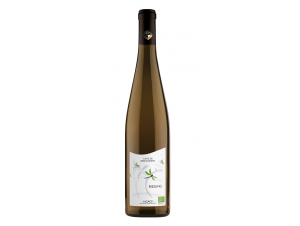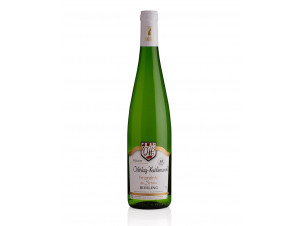You have no items in your shopping cart.
Wine Alsace Riesling
Riesling is a white wine which is part of the great Alsace wines. Its small, compact bunches and berries, golden yellow in colour with a few red spots when ripe, produce remarkable white wines. Depending on whether they are produced from late harvesting or from a selection of noble grapes concentrated in sugar, they are dry or sweet. Read more on Alsace Riesling
-
Top Selling-21%
-
Top Selling
-
Top Selling
- -18%
- -17%
- -21%
Appellation Alsace Riesling
Riesling is the Rhineland grape variety par excellence
Riesling is the Rhine grape variety par excellence! The Romans built roads as they conquered, so that their armies could move in more quickly. But they also always thought of never depriving their armies and the settlers who settled there of wine. This is why, throughout France, they are at the origin of our viticulture. The Rhine Valley is no exception and it was in Gallo-Roman times that the Riesling grape variety was developed, first in Germany and later in France.
The Riesling grape variety gradually spread along the Rhine, then quite abundantly in Alsace, from the 15th century onwards. It gradually took precedence over the other grape varieties and became the leading grape variety in the region in the 1960s. It is now widespread in Eastern Europe, particularly in Romania, Bulgaria and Slovakia.
In France, until 2008, it was only authorised in the Moselle, Bas Rhin and Haut Rhin departments. It is now authorised throughout France, but without claiming its AOC. In any case, the areas planted with Riesling do not go beyond the borders of Alsace and Moselle.
Riesling is a tough grape variety, but one that fears drought
Riesling is produced in the vineyards of Alsace and more precisely in the wine regions of Bas Rhin and Haut Rhin. It likes Alsace, because it appreciates its temperate continental climate and its soil made of limestone, granite, schist, gneiss and sandstone.
The Riesling likes light soils and does not mind cold and harsh winters. What it does not tolerate, however, is drought. It likes rain and humidity, fog and sleet. On the other hand, its sworn enemy is grey rot. The winegrowers watch with great care for the appearance of this destructive fungus, which takes advantage of the small, tightly packed grapes on the vine to spread rapidly and destroy the vineyard at a spectacular rate.
Riesling expresses all the values of its terroir
Rieslings produce an amazing range of aromas and flavours. Their aromatic complexity varies from one terroir to another. They are delicate and can retain a beautiful freshness for years. Some are distinguished by a nice acidity. Riesling lovers sometimes think of it as a sponge that soaks up the characteristics of its terroir and reproduces them in infinite variations.
Riesling has a pale yellow colour, with bright green reflections that underline its characteristic freshness. It is difficult to talk about its nose, as it changes so much from one parcel to another, but its bouquet is always of great finesse.
This racy wine develops subtle fruity aromas of citrus fruits - lemon, lemongrass or grapefruit - but also of peach or pear. The floral aromas are never outdone, with scents of white flowers, lime blossom or white nettle. Depending on the terroir, you may find scents of anise, cumin, liquorice and fennel seed. To further express its terroir of origin, Riesling has mineral notes that evoke flint or gunflint.
In the mouth, it is said to be "vertical". Its liveliness is continuous from start to finish, with a mid-palate marked by fullness. Riesling is a wine for keeping that will improve in the bottle for decades.
Riesling is a wine that is easy to marry
Riesling is a wine that goes wonderfully with fish and shellfish. Its fine acidity reveals the subtle flavours of these dishes all the more when you add a few drops of lemon. The iodine character of seafood suits it just as well as fish cooked in cream or sauce. The minerality of Riesling complements the intense flavours of very typical oysters. But the qualities of Riesling do not stop there, because it honours caviar like no other wine, because its character prevails and embellishes each mouthful.
If you are not an enthusiast of the marine world, you will marry your Riesling with poultry and white meats and especially at the time of the cheese board.
Note that the year 1983 is considered by many as an exceptional vintage.
The domains to discover in the Riesling AOC
Domaine Maximilien Zaepffel
Maximilien Zaepffel wants to conquer the largest public and innovate in his wine culture, while respecting the traditions of the winemakers who preceded him. He relies on the uniqueness of his granite terroir which offers an exceptional minerality.The roots of the vines have to go and find water impregnated by the granite, deep in the earth. This granite base with its exceptional character gives an atypical touch to the range of Alsace wines.
Maximilien Zapffel's estate produces all types of wines: dry, semi-dry, sweet or syrupy. Starting from the Alsatian "framework", the winegrower "wishes to denote, to bypass, to make creations that are a parenthesis in our landscape".
Domaine Zinck
Domaine Zinck covers 20 hectares, a few kilometres south-west of Colmar. It is located in the commune of Eguisheim, one of the most beautiful villages in Alsace. Sheltered by the Vosges mountains, it benefits from a sunny, temperate and dry semi-continental climate.The Zinck estate produces Riesling AOC of the finest quality, taking advantage of the extraordinary richness of each of its plots. The wine loves these silty, silty-clay, chalky-clay, sandstone and volcanic soils, whose strong, full character it reproduces.
The Grands Crus of the Zinck estate are made from grapes harvested at maturity and with low yields. Fine and delicate, subtle and deep on the nose, they are concentrated, harmonious and consistent on the palate.







































 TWIL - Achat de Vin
TWIL - Achat de Vin


